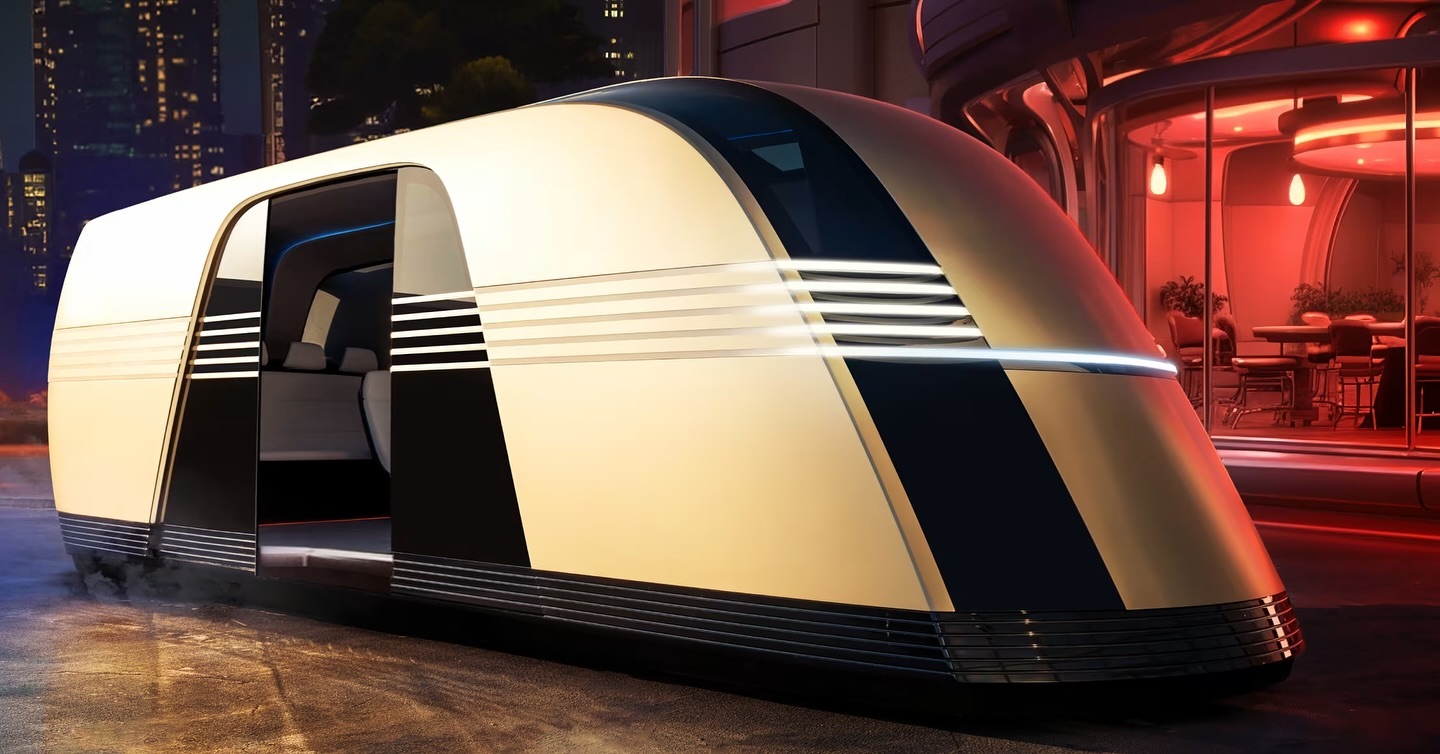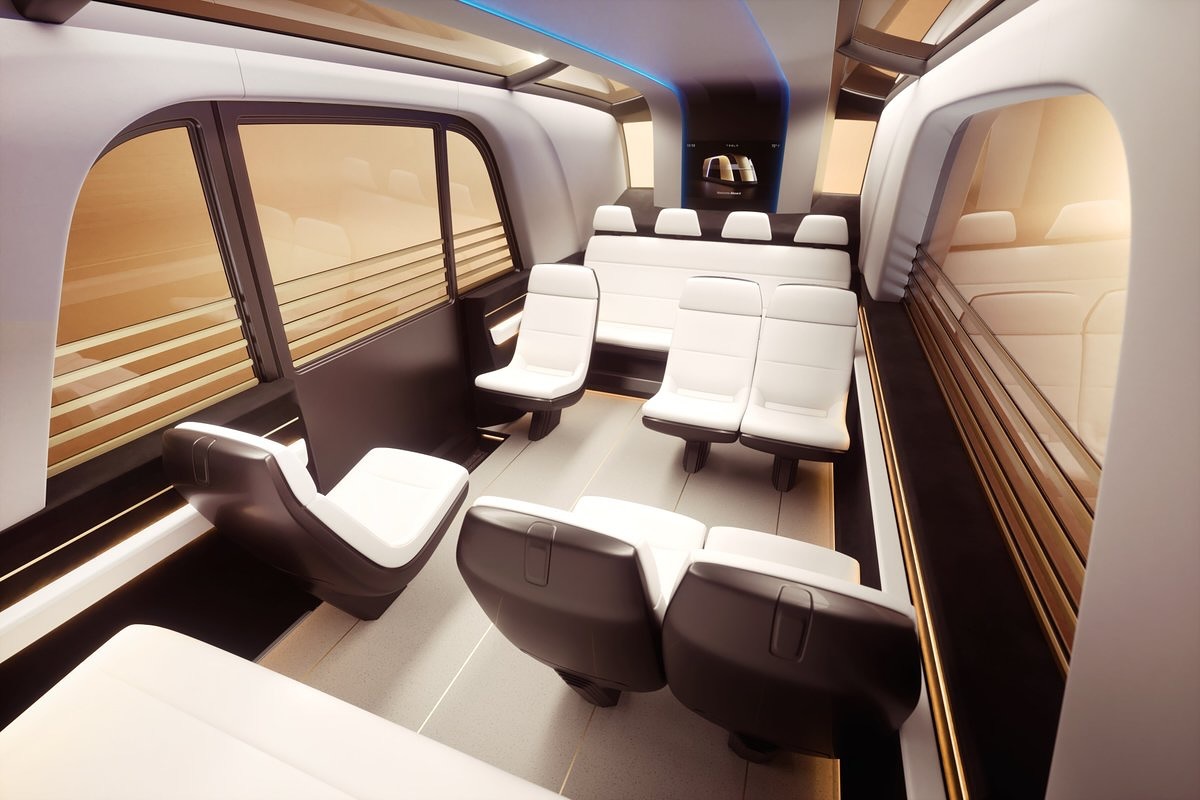
Tesla has done it again. Hot on the heels of their futuristic Cybercab, they introduced the Robovan. This electric van is designed for high-density transport, combining cutting-edge technology with sustainability. Unveiled during the “We, Robot” event alongside the Cybercab, the Robovan promises to reshape how we move both people and cargo in urban environments.
What is the Robovan?
At its core, the Tesla Robovan aims to be a versatile transport solution. It caters to both passenger and cargo needs with the capacity to carry up to 20 people. Whether it’s school trips, sports teams, or a mobile office,T the Robovan adapts to different transportation demands. Like the Cybercab, it boasts fully autonomous capabilities, making it a self-driving marvel with no need for traditional controls.
Key Features: Efficiency Meets Versatility
- Passenger Capacity: The Robovan seats up to 20 passengers, making it ideal for larger groups. It’s a step beyond traditional vans, which often have more limited seating.
- Cargo Flexibility: Beyond moving people, it’s configurable for cargo transport, expanding its use in urban logistics.
- Design: With sliding doors reminiscent of train cars, the Robovan features an interior where passengers can face each other. Its open design promotes interaction.
- Autonomous Driving: Like the Cybercab, the Robovan is fully autonomous, using advanced AI systems for navigation.
- Entertainment & Technology: Tesla doesn’t skimp on comfort. Passengers can enjoy multiple screens for entertainment and information.
Shared DNA with the Cybercab
Tesla unveiled both the Cybercab and Robovan at the same event, emphasizing their shared mission: revolutionizing urban mobility. While the Cybercab focuses on individual or paired transport, the Robovan scales up to handle larger groups. Both vehicles aim to replace traditional taxis and buses, offering electric, autonomous alternatives. Together, they represent Tesla’s broader vision for the future of city transport — sustainable, efficient, and tech-driven.
Market Potential: Who Will Use the Robovan?
Tesla has positioned the Robovan for various high-density scenarios:
- Educational Institutions: Schools can use the Robovan for eco-friendly student transportation and field trips.
- Corporate Use: Businesses could convert it into mobile offices or use it for employee shuttles.
- Sports Teams: It’s perfect for team transport, providing space and comfort during group travel.
The Challenges Ahead
As with the Cybercab, Tesla faces some hurdles:
- Production Timeline: While Tesla’s plans are ambitious, production could face delays. Musk hinted at challenges, leaving the start date unclear.
- Regulatory Barriers: Autonomous vehicles must pass strict regulations. This could delay both the Robovan and the Cybercab from hitting the market as soon as Tesla hopes.

Tesla Robovan Environmental Impact: A Greener Future
The Robovan could drastically reduce urban emissions. As an all-electric vehicle, it produces zero tailpipe emissions, improving air quality in polluted cities. With the potential for solar-powered charging, it aligns with Tesla’s commitment to renewable energy. The Robovan also reduces traffic congestion through smarter route planning, which minimizes idle time and emissions.
Robovan vs. Traditional Vans: How Does It Stack Up?
When compared to traditional commercial vehicles, the Robovan stands out for its adaptability and technological advancements:
| Feature | Tesla Robovan | Traditional Vans |
| Passenger Capacity | Up to 20 passengers | 2-3 passengers |
| Power Source | All-electric | Gasoline/Diesel |
| Autonomous Driving | Fully autonomous | Manual driving |
| Environmental Impact | Zero emissions | Significant CO₂ |
| Tech Features | Advanced AI | Basic tech |

Safety: Autonomy Raises the Bar
Tesla’s autonomous systems claim to be 10 times safer than human drivers. The Robovan, like the Cybercab, is equipped with a 360-degree camera system that reacts faster than human drivers can. Tesla has also introduced fail-safe measures that allow the vehicle to pull over safely in case of system failures.
Final Thoughts: The Future is Electric
The Tesla Robovan is set to change the way we think about urban mobility. With its versatile design, it can carry passengers or cargo with equal ease. It faces similar challenges to the Cybercab, but both vehicles represent a future where transportation is cleaner, more efficient, and fully autonomous.
As Tesla continues to push boundaries, the Robovan and Cybercab could become common sights in our cities. The question is, will they replace traditional vehicles or coexist as part of a larger, greener transport ecosystem?
Checkout the Robovan Car and Driver review